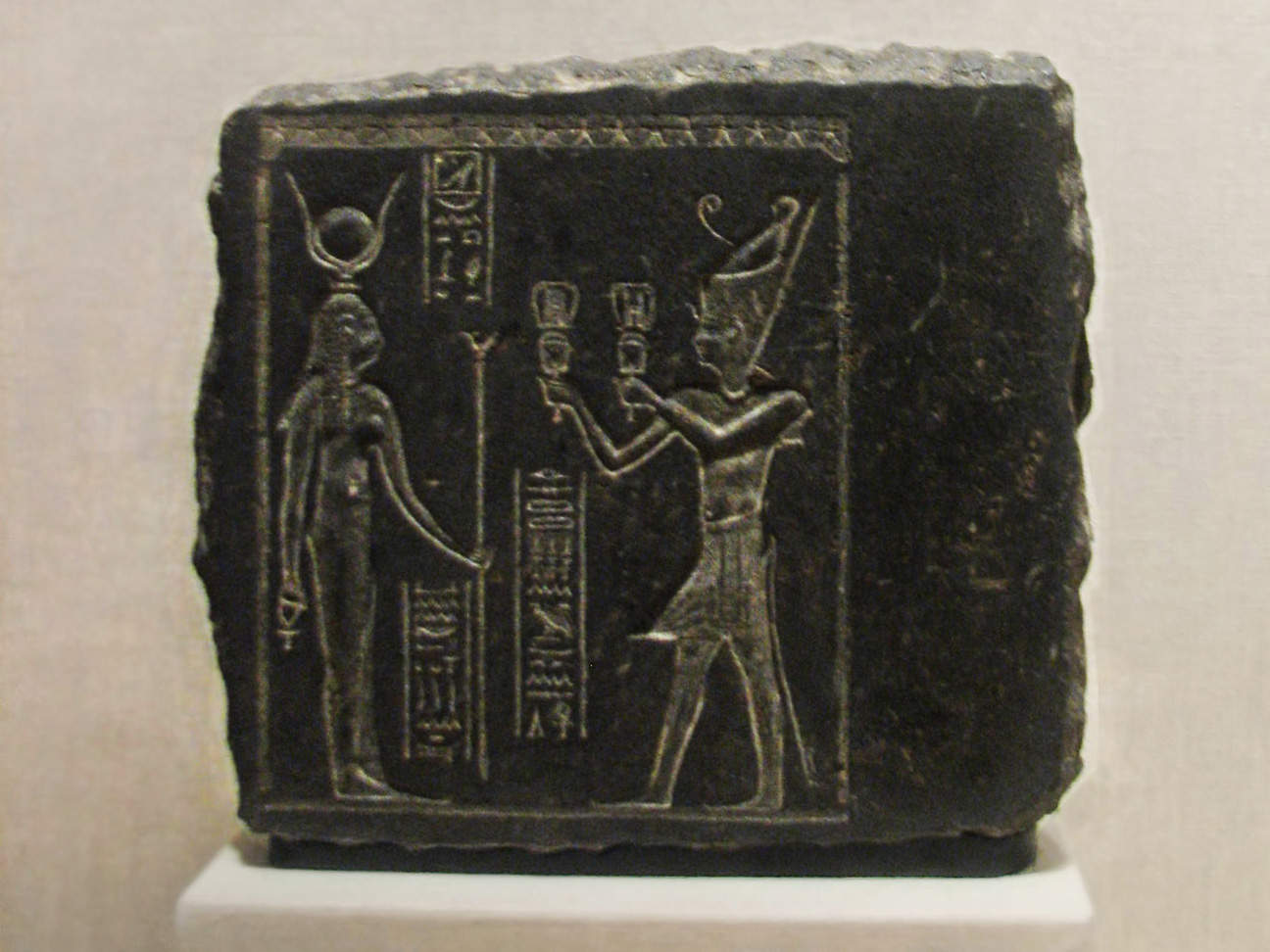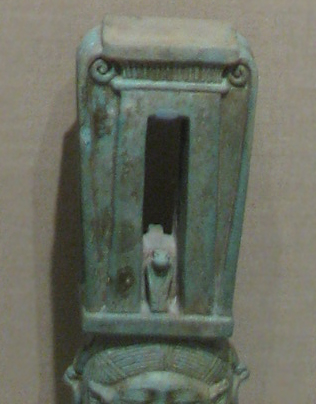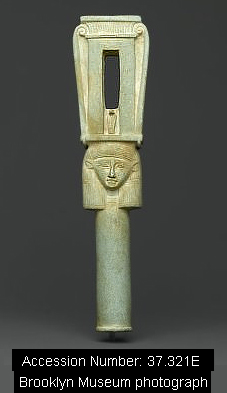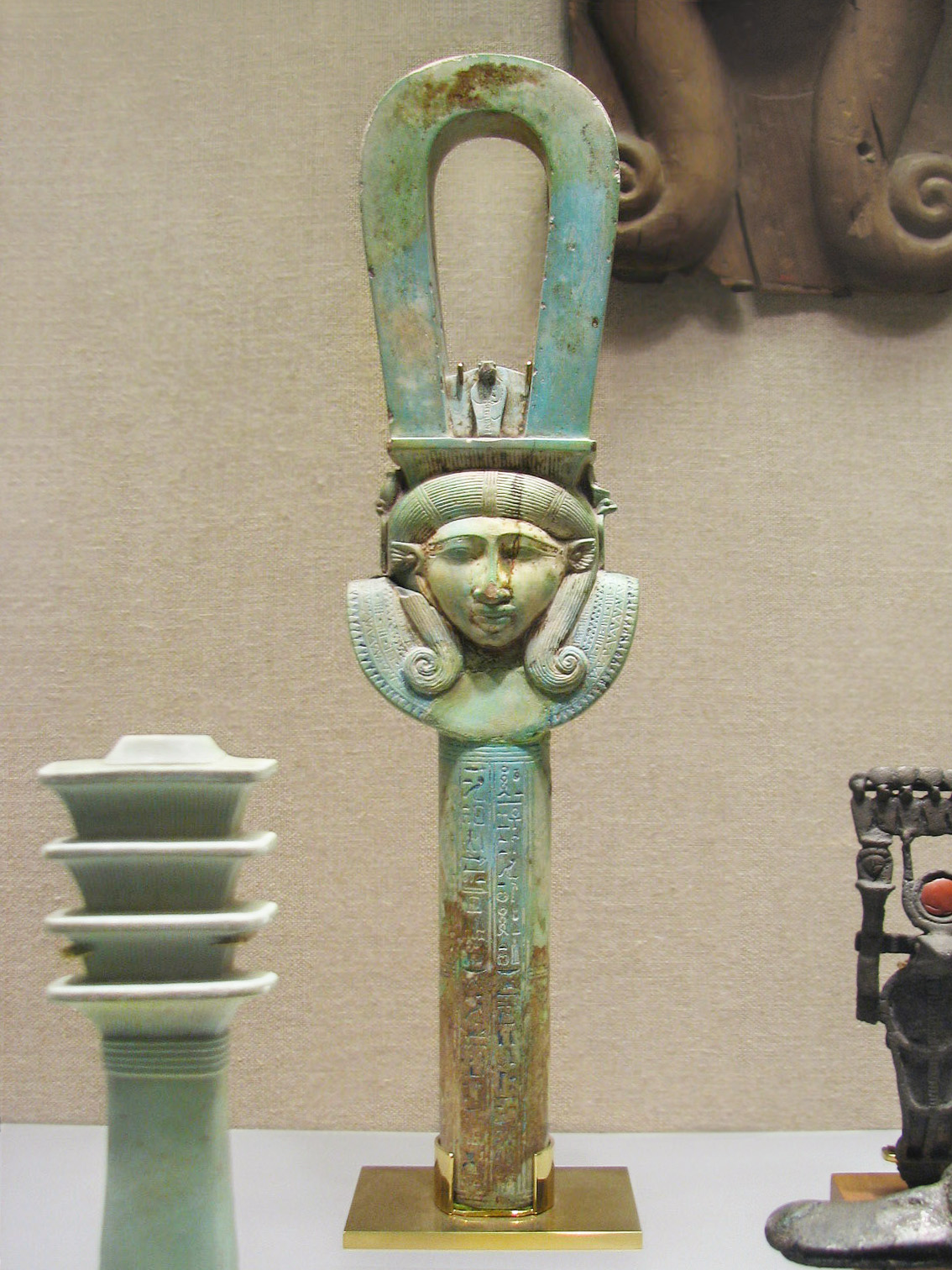
King with Sistra (Rattles) before Hathor Basalt, 7 3/4 x 8 11/16 in. (19.7 x 22 cm)
Ptolemaic Period, 3rd century B.C.E.
Brooklyn #62.46, Charles Edwin Wilbour Fund
Photo © Joan Lansberry, May 2008-2016
|
(From the info card): "Music could appease deities, including goddesses. Here, in a setting of the world bounded by hieroglyphs for earth and heaven, a king as dutiful son stands with sistra before one form of "his mother," the goddess Hathor. As is characteristic of Egyptian goddesses, she holds a papyrus scepter, a symbol of vigor and renewal, and grants the king the "lifetime of Re" and "the years of Atum," meaning eternal life." Alison Roberts explains, "...playing a sistrum in the temple cult was a highly skilled accomplishment and specific rhythms had to be learnt by the temple musicians, who were often female. But the king was also trained in the art, and is shown in the temple of Edfu shaking sistra and running before Hathor, greeting her with the words:
'I have opened your temple. "When the king enters her temple with her musical instruments, so he brings with him the power to control the turbulent divinities residing there." _Hathor Rising_, page 57 The Brooklyn Museum has a sistrum fragment, of which I only caught a small portion, as an incidental to some other items I was photographing: 

 Faience votive sistrum, faience djed pillar - Late Period MMA 26.7.1039, MMA 45.2.10
|